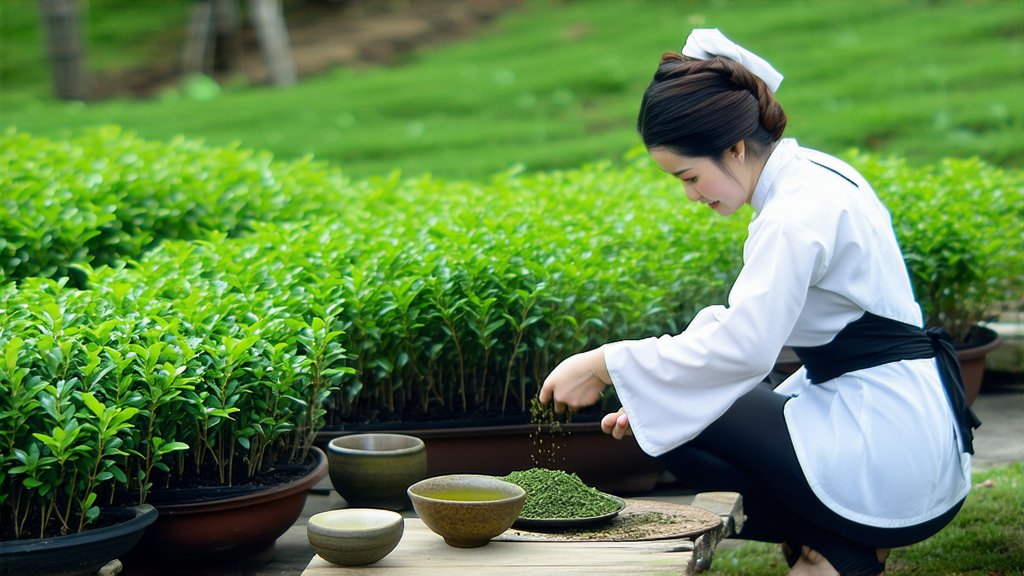
Nestled within the rich tapestry of Chinese tea culture lies a gem that has captivated tea enthusiasts for centuries – Tieguanyin, often referred to as the 'Iron Goddess of Mercy.' This exquisite oolong tea, hailing from the mountainous regions of Anxi County in Fujian Province, boasts a history intertwined with legend, an intricate production process, and a flavor profile that dances on the palate. Join us as we embark on a journey through the verdant landscapes of Tieguanyin, exploring its storied past, diverse varieties, meticulous craftsmanship, and the art of its appreciation.
A Legendary Origin
Tieguanyin's name is steeped in both myth and history. The tale goes that during the Qing Dynasty, a poor scholar named Wei Yin discovered a wild tea plant while he was meditating under a sacred Bodhi tree. In gratitude for the divine intervention that led him to this miraculous find, he vowed to dedicate his life to cultivating this extraordinary tea, naming it Tieguanyin after the Guanyin菩萨 (Goddess of Mercy). Over time, the tea gained immense popularity, not just for its exceptional taste but also for the spiritual solace it brought to those who brewed it. Today, Tieguanyin stands as a testament to the harmony between man, nature, and spirituality in Chinese tea culture.
Varieties and Characteristics
Tieguanyin encompasses a range of sub-varieties, each with its unique characteristics and flavor nuances. Among them, the most renowned are Xiang Pian (Fragrant Piece), Rou Gui (Fleshy Cassia), and Qi Xiang (Fragrant Flavor). Xiang Pian, known for its high floral aroma, offers a symphony of orchid-like scents complemented by a smooth, creamy texture. Rou Gui, on the other hand, presents a more robust character with hints of cinnamon and clove, reminiscent of its cassia bark namesake. Qi Xiang strikes a balance between the two, exhibiting a delicate fragrance alongside a fuller body. These variations cater to diverse palates, ensuring there's a Tieguanyin for every discerning connoisseur.
The Art of Crafting Tieguanyin
The creation of Tieguanyin is an art form that demands precision, patience, and a deep understanding of nature's rhythms. It all begins with the careful selection of tea bushes, typically grown at altitudes between 300 to 1,000 meters, where cooler temperatures and misty conditions contribute to the tea's unique qualities. Harvesting occurs multiple times annually, with spring being the most prized season due to the tender leaves and higher concentration of aromatic compounds.
Once harvested, the leaves undergo a series of meticulous steps: withering under the sun to reduce moisture content, sun wilting to soften the leaves, oxidation to develop the tea's distinctive color and flavor profile, rolling to shape the leaves and release juices, and finally, roasting over charcoal or electric ovens to fix the flavors and enhance the aroma. Each stage requires skillful manipulation and constant monitoring to ensure the perfect balance between freshness and maturity.
Savoring the Symphony of Taste
To truly appreciate Tieguanyin, one must engage in the ritual of tea tasting, or 'Cha Dao.' Begin by warming the teapot with hot water before discarding it. Add approximately 8 grams of loose leaf tea per 150ml of water. The initial infusion should be brief, around 15 seconds, to cleanse the leaves and awaken their flavors. Subsequent infusions can gradually increase in duration, allowing the tea's complexity to unfold.
As you lift the lid of the teapot, a bouquet of floral and fruity aromas will greet your senses. The first sip reveals a harmonious blend of sweetness and umami, followed by a lingering aftertaste that whispers of distant mountain breezes. Observe the tea's lustrous amber hue in your cup, a visual testament to its quality. With each infusion, Tieguanyin reveals new dimensions of flavor, subtle shifts in aroma, and a deepening sense of tranquility.
Conclusion
Tieguanyin is more than just a beverage; it embodies the essence of Chinese tea philosophy—a pursuit of harmony, purity, and refinement. Its legacy is etched in every leaf, its story woven into every sip. As you delve into the world of Tieguanyin, you embark on a sensory journey that transcends time and space, connecting you to generations of tea farmers, masters, and enthusiasts who have cherished this iron goddess of grace and wisdom. So, take a moment, brew a pot of Tieguanyin, and let its enchanting melody serenade your soul.
Keywords: Tieguanyin, Oolong, Chinese Tea Culture, Tea Tasting, Anxi County